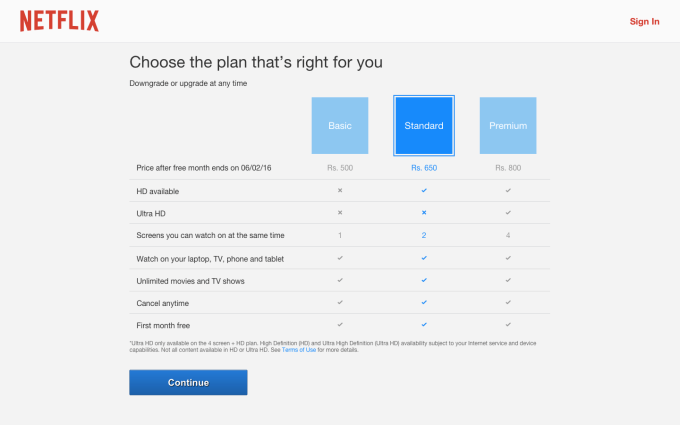U.S. movie streaming giant Netflix just dropped the hammer and opened its service in 130 new countries, including India and Russia — but crucially not China. These new markets take Netflix, which claims 70 million customers, to more than 190 countries worldwide.
The surprise reveal came at CES 2016, where the company had expected to announce its long-awaited entry into India. Well, it did that, and then some. The move was unexpected since Netflix had slowly been building its coverage up over recent years, foraying into Asia Pacific for the first time in 2015.
Now, it has just opened its service up in some of the world’s largest countries — including India, Russia and Indonesia — just like that, coming good on its previously communicated aggressive global expansion plan.
There was plenty of speculation last year about whether the company would enter China. Netflix was reportedly in talks with Alibaba about a potential partnership, but that alliance seemed less likely after Alibaba launched its own subscription-based streaming service in China. Nonetheless, Netflix CEO Reed Hastings said the company hopes to enter China in the future, according to Variety’s live blog of the company’s press event at CES.
And, in case you were curious, there are some exceptions. Netflix “also won’t be available in Crimea, North Korea and Syria due to U.S. government restrictions on American companies,” the company confirmed in an official announcement.
Netflix pricing in new markets seems to be in line with its U.S. costings. In India, for example, it starts at 500 INR (around $7.49) per month for the basic, non-HD, single user package. Netflix Standard (HD and two screens) and Premium (ultra-HD and four concurrent screens) come in at 650 INR ($9.75) and 800 INR ($11.99) respectively each month.

Netflix pricing in India
We’re still checking, but it looks like customers in new markets can only make payment by credit card and debit card at this point. It would be completely logical to see Netflix partner with mobile carriers to open its service up to the many hundreds of millions who don’t own a credit card, but could pay via carrier billing or other forms of payment. (That’s a system already being run by competitors in Asia, like iFlix — which is raising $150 million to fund ambitious global plans of its own — and HOOQ.)

